![]()
![]()
![]()
Use LEFT and RIGHT arrow keys to navigate between flashcards;
Use UP and DOWN arrow keys to flip the card;
H to show hint;
A reads text to speech;
58 Cards in this Set
- Front
- Back
|
Bracken fern location and description |
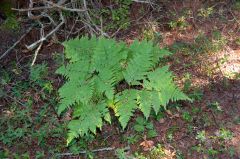
found in woodlands and moist open areas--triangle leaves reaching two-three feet high-- |
|
|
signs of bracken fern poisoning |
depression, incoordination, blindness |
|
|
what bracken fern does |
inhibits absorption of vitamin B1 which can lead to neurological impairment-- 20-25% for several weeks will cause poisoning--SLOW ACTING
|
|
|
what to do with bracken fern poisoning |
lg dose of thiamin over course of 1-2 weeks |
|
|
hemlock identification and location |
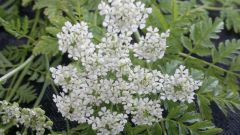
weed with branching stems, leaves, and clusters of white flowers--grows along roadsides or open uncultivated areas |
|
|
hemlock danger |
contains neurotoxins that effect CNS and PNS--4-5 lbs is a lethal dose but most animals avoid this plant.- FAST ACTING |
|
|
signs of hemlock |
nervousness, tremors,incoordination,depression, diminished HR and RR. death is caused from Respiratory failure |
|
|
what do do about hemlock |
supportive care |
|
|
tansy ragwort |
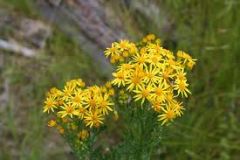
multi stemmed weed with daisy like flowers |
|
|
tansy ragwort danger |
inhibit cell division (especially in liver)-- chronic exposure over time 50-150lbs of consumption over time |
|
|
tansy ragwort signs |
diminished appetite and weight loss, depression, jaundice, incoordination |
|
|
johnson grass description |
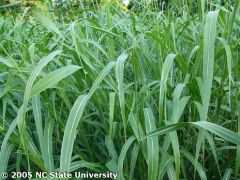
course long grass |
|
|
johnson grass danger |
causes suffocation when metabolized by absorbing oxygen--given over a few weeks can cause damage |
|
|
oleander |

just 30-40 leaves can be deadly--effects show within several hours |
|
|
water hemlock |
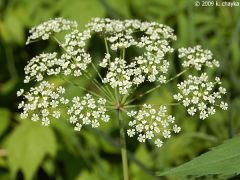
less than a pound can be fatal-- within hours is effected |
|
|
yew |
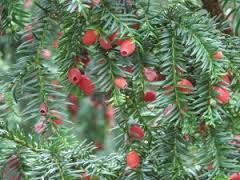
mouthful can be deadly within a few minutes |
|
|
core vaccines |
tetanus, eastern and western encephalitis, west nile virus, rabies |
|
|
tetanus |
caused by toxin producing bacteria in the intestinal tract and in the soil |
|
|
tetanus symptoms |
muscle stiffness, flared nostrils, jaw stiffens and prevents eating/drinking |
|
|
tetanus exposure |
lacerations, puncture wounds, umbilicus of newborn foals |
|
|
fatality of tetanus |
over 80% |
|
|
when to vaccinate against tetanus |
annual--vet may recommend additional for mares and foals--booster tetanus after puncture wound |
|
|
encephalomyelitis (WEE, EEE, VEE) |
sleeping sickness |
|
|
WEE location |
north america |
|
|
EEE location |
east and southeast |
|
|
VEE location |
not in US |
|
|
fatality WEE |
20-50% |
|
|
fatality EEE |
75-100% |
|
|
fatality VEE |
40-80% |
|
|
When to vaccinate for WEE and EEE |
annually- pregnant mares/foals may require an additional |
|
|
west nile virus |
spread by mosquitoes-- causes inflammation in brain/ SC |
|
|
signs of west nile virus |
fever, depression, appetite loss, staggering when walking |
|
|
fatality of west nile virus |
25-35% |
|
|
when to vaccinate for West nile virus |
annually-- biannually in high risk areas-- normally in spring before mosquitoes are active and possibly an additional in fall |
|
|
rabies |
infrequent but deadly-- zoonotic |
|
|
exposure to rabies |
bite from rabid animal |
|
|
other vaccines(not core) |
influenza, rhinopneumonitis, strangles, potomac horse fever |
|
|
influenza |
respiratory-- highly contagious--vaccinate every 3 to 6 months-IM or intranasal |
|
|
rhinopneumonitis |
EHV-1 and EHV-4 (equine herpes virus)--young horses and pregnant mares can be vaccinated--every 6 months at least |
|
|
strangles |
highly contagious but rarely fatal--could be side effects from vaccine |
|
|
potomac horse fever |
seasonal, mortality rate: 5-30% |
|
|
these teeth erupt at 0-7 days |
1st incisor (deciduous) |
|
|
teeth erupt at 0-14day |
6's,7's, 8's (pre molars) (deciduous) |
|
|
teeth erupt at 4-8 weeks |
2nd incisor (deciduous) |
|
|
teeth erupt at 6-9 months |
third incisor(3's) (deciduous)---and wolf tooth(5's) permanent |
|
|
teeth erupt at 9-15 moths |
9's (first molar) permanent |
|
|
teeth erupt at 2 years |
10's (2nd molar) permanent |
|
|
teeth erupt at 2 and 1/2 years |
1's and 6's (permanent) |
|
|
teeth erupt at 3 years |
7's permanent |
|
|
teeth erupt at 3 and 1/2 years |
2's, 8's, 11's permanent |
|
|
teeth erupt at4 years |
4's (canine), 8's --permanent |
|
|
teeth at 4 and 1/2 and older |
3's and 4's --all teeth in |
|
|
estimated dehydration in horse CRT <2, normal |
<5% dehydrated |
|
|
estimated dehydration in horse CRT 2, HR is 40-60bpm |
6-7% |
|
|
estimated dehydration in horse CRT 3, HR is 61-80bpm |
8-9% |
|
|
estimated dehydration in horse CRT 4, HR is 81-100bpm |
10-11% |
|
|
estimated dehydration in horse CRT >4, HR is >100bpm |
12-15% |
|
|
Deficit replacement formula |
Body weight (kg ) × % dehydration = liters to replace
|

